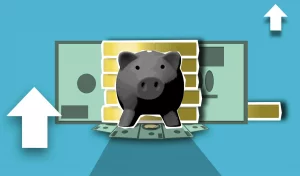If you have been in the foodservice business, you know how it goes. Either you’re in it for the long haul because you know about the nitty gritties of restaurant profit margins, or you’re out.
Period.
Many food startup business owners attest to quitting way before breaking even. It’s a known fact that, despite having a fantastic restaurant business plan to begin with, there are a lot of things that people don’t account for.
From a bird’s eye view, breaking even, and getting by with a fat chunk of restaurant profit margins seems so easy before the business is incepted. However, it is only after getting in the trenches, you realize that you need to wear all sorts of hats to see even the slightest hint of profit.
We’ll be real with you. If you are just about to get started, don’t aim for making a profit during the first few quarters. Your real target is breaking even, minimizing overhead expenses and managing everything else.
Ultimately, if you have a sound plan and the temperament to sustain adversity, you will succeed. However, it all comes down to restaurant profit margins. We have a fantastic guide on this issue, and we’d love for you to go through it.
Here’s why figuring out how to make a profit in the restaurant business is important.
What Are Restaurant Profit Margins?
Profit is your takeaway money after you have accrued all the revenue, and deducted your expenses. Meanwhile, revenue is the amount of total money that you amassed in a given business cycle. However, in its given state, revenue is yet to be accounted for expense deduction, overhead fee, taxes and other stuff.
Profit, on the other hand, is expressed in percentages and/ or extra money that you are left with. It’s the premium that you apply on your food order menu, and other restaurant services to sustain the business. Now, there are a number of ways to:
- Minimize your expenses
- Maximize your restaurant profit margins
Both of the variables go hand in hand, as one severely affects the other. If expenses are at an all-time-high, profits shrink. In worse case scenario, you may not be making any type of restaurant profit margins.
In the best case scenario, your expenses are minimum, or at least to the point where they can be controlled. This will allow you to maximize your restaurant profit margins quite easily.
Unfortunately, even though your total revenue may come from more than one revenue stream, the sky’s the limit when it comes to expenses. Between labor, inventory, payroll, rent, utilities, advertising, credit card processing fees, equipment repairs, restaurant POS system technology, general maintenance, and the dozens of other fixed costs, variable, and above-the-line expenses thrust upon restaurant owners, it’s common to feel underwhelmed at what’s left after you’ve made all the necessary deductions.
Likewise, even though you own a restaurant, you may be catering to a specific audience. Top it off with the possibility that you may have signed up with a food aggregator service account that affects your profit percentage in multiples!
On a related note, signing up for an account with a food services vendor is like choosing a life partner. Make one wrong move, and you will be struggling to break even! Forget about making any restaurant profit margins on the side.
[INSERT_ELEMENTOR id=”2061″]
How does that happen?
Not to name-call or anything, but there are many food aggregators and service providers that charge restaurants a specific flat percentage. This percentage is called: “commission fee”, and it is applied on each incoming order, regardless of the order’s monetary value.
Aside from the commissions’ dilemma, there is a very real possibility that the food aggregator might charge you a 3% extra fee for incoming credit card transaction fees. This fee percentage is fixed and needs to be paid, in case your restaurant customers are placing their orders through your online, or the aggregator’s online food ordering app. Either way, this is an aspect of doing business that can affect your restaurant’s profit margins in near future.
Case in point, be careful when choosing your online food service provider.
How to Improve Restaurant Profit Margins?
There is no easy way. Sometimes, you will need to improvise due to different constraints in your food industry.
If we are sure of two things that are guaranteed to improve your restaurant profit margins, we’d sum them up as:
- Calculating and Figuring Out the CoGS (Cost of Goods Sold)
- Managing/ Minimizing Overhead Restaurant Expenses
Let’s start with the art of managing food cost percentage through CoGS management.
1. Method A: Food Cost Itemization:
In this method, you can itemize all your ingredients and calculate their cost to get an accurate number for the cost per serving. For instance, if it’s a specialty dish, calculate the cost of each ingredient, and add it. The final sum is the actual cost of creating that dish in a given portion/ size.
This method is relatively easy and suitable for new food business owners with a small food order online menu.
2. Food Cost Percentage Calculation As A Whole:
This formula works at the inventory level and gives the ratio of your food cost to revenue.
(Cost of your Inventory at the Start of a Fiscal Period + Purchase Cost – Ending Inventory). Once you have the figure, divide it by the total sales. The formula can be tweaked further by dividing the cost of inventory+ purchase cost – ending inventory by the total number of sales made through online, or offline orders at your local establishment.
Here’s an example: we’ll assume the following values for your reference:
Initial Inventory Value = $10,000
Cost of Additional Purchases = $2000
Deductions Made or the Value of Ending Inventory = $4000
In the above scenario, it’ll be $10,000 + $2000 – $4000 = $8000
Now, assuming that you made roughly $12,000 in sales total by the end of a fiscal cycle, your percentage will be 66% after you divide $8000 by $12,000. Technically, the figure is 0.66, but it interprets to 66% after you multiply it by 100. 66 cents is the cost of your food on top of $1.
Other Important Ways to Maximize Restaurant Profit Margins:
As we talked about minimizing your overhead expenses to maximize your restaurant profit margins, here are some other options to go with.
1. Shared Kitchen Facility:

A shared kitchen facility works wonders when it comes to managing overhead expenses.
Many food startups share a co-working space where multiple operators use the same kitchen. This way, everyone gets to pay a small rental fee, that makes up for the kitchen owners’ overall demand at month’s end.
Shared kitchens are also an awesome recommendation because you will no longer be employing a long list of chefs, waiters and other staff members. Especially, if you are operating through a cloud kitchen model where there is no dine-in facility, you just need to divert your focus on taking care of online food order inquiries.
Expenses will go down, and there will be enough wiggle room to increase restaurant profit margins.
[INSERT_ELEMENTOR id=”2061″]
2. Using Shared Customer Analytics Data:
Depending on your food aggregator business partner, you will have access to your customers’ data. Use it to your advantage because this data comes with metrics.
- Which menu item is the most popular?
- Which one of your customers placed the most orders to date?
- Which types of dishes are ordered online during rush hours?
Such questions and many others are already waiting to be explored through the customer analytics dashboard. Contact your food aggregator business partner, or sign up for a new account with a service provider that has no issue sharing your customer data, with you!
3. Implement Smart Scheduling
Given how much of your revenue goes to payroll, streamlining your staff schedules is an easy way to ensure your restaurant is sufficiently staffed to meet customer demand at any hour of the day.
Over-scheduling and under-scheduling both pose a threat to your profit margin, so it’s essential to track what times and days are busiest for you and schedule accordingly. Creating a smart restaurant scheduling solution with your restaurant manager will not only save you time schedule but will also reduce your labor costs by matching staffing levels to projected sales.
Lastly, do not make the mistake of getting an angel investor on board who has a high-interest rate. We’d rather see you working solo, instead of depending on any investor for support. Sometimes, when businesses go sideways, investors are more concerned about recovering their investment amount, rather than helping.
Good luck, and don’t forget to share your valuable insights through the comments section below.
FAQs
How Much Profit Does Restaurant Make?
Restaurants make a lot of money. Depending on the restaurant, profits can range from 2-10% of total sales.
Whereas the average restaurant profit margin in 2022 ranged between 3-5%.
Why Are Restaurant Profit Margins So Low?
When it comes to restaurants, margins are usually pretty low. This is due in part to the high cost of food and beverage, as well as the increased minimum wage.
What Is The Average Profit Margin For A Restaurant?
Restaurant profit margin is approximately 3-6%, but it varies by type of restaurant
[INSERT_ELEMENTOR id=”2061″]
Related Articles:
 6 Restaurant Opening Promotion Ideas to Win More Customers
6 Restaurant Opening Promotion Ideas to Win More Customers
 5 Best Restaurant Promotions that Work for BlinkCo.’s Clients
5 Best Restaurant Promotions that Work for BlinkCo.’s Clients
 The Ultimate Guide on Starting your Own Food Truck Business
The Ultimate Guide on Starting your Own Food Truck Business
 How to Calculate Food Cost Percentage (with REAL examples)
How to Calculate Food Cost Percentage (with REAL examples)
 Restaurant Guide: How To Convert Third Party Customers To Direct Ordering?
Restaurant Guide: How To Convert Third Party Customers To Direct Ordering?








